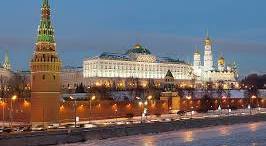Which are the largest countries in Europe?

In the mosaic of Europe’s diverse landscape, certain nations stand as monumental behemoths, commanding attention and admiration for their sheer magnitude. As we embark on a journey to uncover which are the largest countries in Europe. Russia, the colossus reigns supreme as the largest country not only in Europe but in the world.
Its immense territory spans across two continents, encompassing a mosaic of diverse ecosystems, from the frozen tundra of Siberia to the sun-drenched shores of the Black Sea. Here, ancient traditions blend seamlessly with modern innovation, creating a tapestry of contrasts and contradictions that captivate the imagination.
Then, there’s France, a land of enchanting landscapes and cultural treasures, where the allure of Parisian elegance converges with the rugged beauty of the Alps and the azure shores of the Mediterranean. As one of the largest countries in Europe, France’s influence extends far beyond its borders, shaping art, cuisine, and fashion on a global scale.
And let’s not forget Spain, a vibrant tapestry of history and diversity, where the legacy of Moorish rule mingles with Gothic cathedrals and bustling metropolises. With its vast expanses of sun-soaked plains and rugged mountains, Spain captivates the senses and ignites the spirit of adventure.
Europe, a continent renowned for its rich history, diverse cultures, and breathtaking landscapes, encompasses a multitude of countries varying in size, population, and significance. Understanding the largest countries in Europe provides insight into the continent’s geographical and geopolitical dynamics, offering a glimpse into its vastness and diversity.
Brief Overview of Europe
Europe, located in the northern hemisphere and bordered by the Arctic Ocean to the north, the Atlantic Ocean to the west, and the Mediterranean Sea to the south, is the world’s second-smallest continent by land area. It comprises approximately 50 countries, each with its own unique history, culture, and traditions.
Importance of Knowing the Largest Countries in Europe
Knowing the largest countries in Europe is essential for various reasons. It helps in understanding the continent’s geographical diversity, economic influence, and political significance. Additionally, awareness of these countries facilitates travel planning, cultural exploration, and geopolitical analysis.
Russia: The Giant of Europe
Geographical Overview
Russia, spanning across Eastern Europe and Northern Asia, is the largest country in Europe by land area. It boasts diverse landscapes, including vast plains, dense forests, and towering mountain ranges such as the Ural Mountains and the Caucasus.
Population and Area Size
With a land area exceeding 17 million square kilometers, Russia dominates the European landscape. It is home to over 145 million people, making it one of the most populous countries not only in Europe but also in the world.
Key Cities and Regions
Moscow, the capital city, serves as the political, economic, and cultural heart of Russia. Other key cities include Saint Petersburg, Novosibirsk, and Yekaterinburg. Regions such as Siberia, the Far East, and the Volga Region contribute significantly to the country’s economic and cultural heritage.
Ukraine: A Land of Diversity
Overview of Ukraine’s Geography
Situated in Eastern Europe, Ukraine boasts diverse geographical features, including fertile plains, dense forests, and picturesque coastlines along the Black Sea.
Population Statistics
With a population exceeding 40 million, Ukraine ranks among the largest countries in Europe. Its diverse population includes Ukrainians, Russians, and various ethnic minorities, contributing to its cultural richness and diversity.
Notable Cities and Regions
Kyiv, the capital city, stands as a cultural and historical center, known for its architectural landmarks and vibrant cultural scene. Other notable cities include Lviv, Odessa, and Kharkiv. Regions such as Crimea and the Carpathian Mountains offer unique landscapes and cultural experiences.
France: Beyond the Romance
Geographical Features
France, located in Western Europe, boasts diverse geographical features, from the rugged Alps in the southeast to the fertile plains of the Loire Valley.
Population Density and Size
With a population exceeding 67 million, France ranks among the largest countries in Europe. Despite its relatively small land area of approximately 551,695 square kilometers, France maintains a significant population density.
Major Cities and Regions
Paris, the capital city, stands as a global center for art, fashion, and cuisine, attracting millions of visitors annually. Other major cities such as Marseille, Lyon, and Bordeaux showcase France’s cultural diversity and economic vitality. Regions such as Provence, Normandy, and Brittany offer distinct landscapes and culinary traditions.
Spain: The Iberian Jewel
Spain, situated in southwestern Europe on the Iberian Peninsula, boasts a diverse range of geographical characteristics that contribute to its allure as a premier travel destination.
Geographical Characteristics
Spain’s geographical landscape is characterized by a variety of features, including rugged mountain ranges such as the Pyrenees and the Sierra Nevada, vast plateaus such as the Meseta Central, and stunning coastlines along the Mediterranean Sea and the Atlantic Ocean.
The country’s diverse terrain provides the perfect backdrop for a wide range of outdoor activities, from hiking and skiing in the mountains to sunbathing and water sports along the coast.
Population Statistics
With a population exceeding 47 million people, Spain ranks as one of the most populous countries in Europe. Its population is concentrated in urban areas such as Madrid, Barcelona, and Valencia, but rural areas also play a significant role in shaping the country’s cultural identity.
The diverse population of Spain reflects its rich history of immigration and cultural exchange, with influences from various civilizations including the Romans, Moors, and Visigoths.
Significant Cities and Regions
Madrid, the capital city, serves as the political, economic, and cultural center of Spain. Known for its vibrant nightlife, world-class museums, and historic architecture, Madrid attracts millions of visitors each year.
Other significant cities include Barcelona, renowned for its unique blend of Gothic and modernist architecture, and Seville, famous for its Moorish heritage and flamenco dancing.
Regions such as Andalusia, Catalonia, and the Basque Country each offer their own distinct cultural traditions, cuisine, and landscapes, contributing to Spain’s reputation as a diverse and dynamic country.
Sweden: Land of the Midnight Sun
Sweden, nestled in northern Europe, is a country renowned for its stunning landscapes, vibrant cities, and rich cultural heritage. Let’s delve into what makes Sweden truly unique.
Geography and Climate
Sweden’s geography is characterized by vast forests, numerous lakes, and a rugged coastline dotted with islands. The country experiences a diverse range of climates, from temperate in the south to subarctic in the north. One of Sweden’s most notable natural phenomena is the midnight sun, which occurs in the northernmost parts of the country during the summer months, providing endless daylight.
Population Distribution
With a population of over 10 million people, Sweden has a relatively low population density compared to other European countries. The majority of the population is concentrated in urban areas such as Stockholm, Gothenburg, and Malmö, while rural regions in the north remain sparsely populated.
Prominent Cities and Regions
Stockholm, the capital city, is a cultural and economic powerhouse known for its historic old town, modern architecture, and vibrant arts scene. Gothenburg, located on the west coast, boasts a lively atmosphere, beautiful canals, and a thriving culinary scene. Northern regions such as Lapland offer pristine wildernesses, where visitors can experience the magic of the Arctic landscape and perhaps catch a glimpse of the elusive northern lights.
Norway: Fjords and Northern Lights
Overview of Norway’s Landscape
Norway, situated in northern Europe, boasts a spectacular landscape characterized by majestic fjords, towering mountains, and pristine wilderness. The country’s rugged terrain is carved by glaciers and shaped by millennia of geological activity, creating some of the most breathtaking natural scenery on Earth.
Population Size and Density
Despite its vast expanse of wilderness, Norway has a relatively small population of around 5.4 million people. The population density is highest in urban areas such as Oslo, Bergen, and Trondheim, while rural regions remain sparsely populated. This low population density allows for a deep connection with nature and a sense of tranquility in the countryside.
Notable Cities and Regions
Oslo, the capital city, is a vibrant hub of culture, commerce, and innovation, nestled between the Oslofjord and forested hills. Bergen, known as the gateway to the fjords, is famous for its colorful wooden houses and UNESCO-listed Bryggen Wharf. The fjords region, including iconic destinations like Geirangerfjord and Nærøyfjord, attracts visitors from around the world with its dramatic landscapes and serene beauty. Further north, the Arctic city of Tromsø offers unparalleled opportunities to witness the mesmerizing spectacle of the northern lights dancing across the night sky.
Germany: Heart of Europe
Geographical Features
Germany, nestled in the heart of Europe, boasts diverse geographical features ranging from the rolling hills of the Black Forest to the snow-capped peaks of the Bavarian Alps. The country is crisscrossed by numerous rivers, including the Rhine, Danube, and Elbe, which play a vital role in shaping the landscape and providing transportation routes.
Population Statistics
With a population exceeding 83 million people, Germany is the most populous country in the European Union. Despite its relatively small land area compared to other European countries, Germany’s population density is high, particularly in urban centers such as Berlin, Hamburg, and Munich.
Major Cities and Regions
Berlin, the capital city, is a vibrant metropolis known for its rich history, cultural diversity, and thriving arts scene. Hamburg, located on the Elbe River, is a major port city and economic hub, while Munich, in southern Germany, is famous for its beer gardens, historic architecture, and annual Oktoberfest celebration. Other notable regions include the Rhine Valley, with its picturesque vineyards and medieval castles, and the Black Forest, renowned for its dense forests, charming villages, and cuckoo clocks.
Finland: Land of a Thousand Lakes
Finland, often referred to as the “Land of a Thousand Lakes,” is a Nordic country located in Northern Europe. Its distinctive geography and climate make it a unique destination for travelers seeking both natural beauty and cultural experiences.
Geography and climate
Finland’s geography is characterized by its abundance of lakes, forests, and islands. With over 188,000 lakes scattered across the country, it boasts one of the highest densities of lakes in the world. The presence of these lakes not only adds to the country’s scenic beauty but also influences its climate, moderating temperatures and contributing to its relatively mild weather compared to other countries at similar latitudes.
The climate in Finland varies significantly between seasons, with distinct differences between the long, cold winters and the short, mild summers. The northern regions experience subarctic and Arctic climates, while the southern parts of the country have a more temperate climate influenced by the Baltic Sea.
Population distribution
Despite its vast land area, Finland has a relatively small population, with most of its inhabitants concentrated in the southern regions, particularly around the capital city, Helsinki, and other major urban centers such as Tampere, Turku, and Espoo. The northern and eastern parts of the country are sparsely populated, with many areas characterized by wilderness and uninhabited wilderness.
Prominent cities and regions
Helsinki, the capital and largest city of Finland, is a vibrant metropolis known for its stunning architecture, cultural attractions, and thriving culinary scene. Other notable regions include Lapland, in the far north, famous for its breathtaking natural landscapes and opportunities for outdoor activities such as skiing, hiking, and wildlife watching. The Åland Islands, located in the Baltic Sea, offer a unique blend of Finnish and Swedish culture, picturesque villages, and scenic coastlines.
Italy: Where History and Beauty Meet
Italy, a country synonymous with history, art, and cuisine, is situated in Southern Europe and boasts a rich cultural heritage dating back thousands of years. From the majestic ruins of ancient Rome to the stunning coastlines of the Amalfi Coast, Italy captivates visitors with its diverse landscapes and timeless charm.
Geographical overview
Italy’s geographical diversity is striking, encompassing everything from snow-capped mountains in the north to sun-drenched beaches in the south. The Apennine Mountains run the length of the country, dividing it into distinct regions with their own unique landscapes and climates. Italy’s coastline stretches for over 7,600 kilometers, offering a plethora of picturesque seaside towns and sandy beaches.
Population size and density
With a population of over 60 million people, Italy is one of the most densely populated countries in Europe. The majority of its population resides in urban areas, with Rome, Milan, and Naples being the largest cities. However, Italy also has many charming rural villages and towns dotted throughout its countryside, where traditional ways of life persist.
Key cities and regions
Rome, the capital city of Italy, is a treasure trove of ancient history and architectural marvels, including iconic landmarks such as the Colosseum, Vatican City, and Pantheon. Florence, in the heart of Tuscany, is renowned for its Renaissance art and architecture, while Venice captivates visitors with its romantic canals and historic palaces. The Amalfi Coast, with its cliffside villages and azure waters, is a haven for sun-seekers and honeymooners alike.
Poland: A Country of Resilience
Poland, located in Central Europe, is a country with a rich and turbulent history, marked by periods of triumph and adversity. Despite facing numerous challenges throughout its past, Poland has emerged as a resilient and vibrant nation, celebrated for its cultural heritage, hospitality, and scenic beauty.
Geographical characteristics
Poland’s geography is characterized by its diverse landscapes, which range from rolling plains and fertile farmland to dense forests and picturesque lakes. The country is situated at the crossroads of Eastern and Western Europe, giving it a unique blend of influences from both regions. The Carpathian Mountains in the south and the Baltic Sea coast in the north add to Poland’s natural allure.
Population statistics
With a population of over 38 million people, Poland is one of the most populous countries in Central Europe. The majority of its population is concentrated in urban areas, particularly in cities such as Warsaw, Krakow, and Wroclaw. However, Poland also has many charming small towns and villages, where traditional customs and folk traditions thrive.
Significant cities and regions
Warsaw, the capital and largest city of Poland, is a bustling metropolis known for its historic old town, vibrant nightlife, and thriving cultural scene. Krakow, with its well-preserved medieval architecture and lively atmosphere, is a UNESCO World Heritage Site and a popular tourist destination. The Masurian Lake District, in northeastern Poland, is a haven for outdoor enthusiasts, offering opportunities for sailing, fishing, and hiking amidst stunning natural scenery.
Romania: From the Carpathians to the Black Sea
Romania, located in Southeastern Europe, is a country of striking contrasts, from the rugged peaks of the Carpathian Mountains to the tranquil shores of the Black Sea. With a rich tapestry of history, culture, and natural beauty, Romania offers visitors a diverse range of experiences waiting to be explored.
Overview of Romania’s geography
Romania’s geography is defined by its diverse terrain, which includes mountains, hills, plains, and coastlines. The Carpathian Mountains, which traverse the country from north to south, are home to picturesque landscapes, dense forests, and abundant wildlife. The Danube River, Europe’s second-longest river, flows through Romania, offering opportunities for river cruises and exploration.
Population statistics
Romania has a population of over 19 million people, making it one of the most populous countries in Eastern Europe. The majority of its population is concentrated in urban areas, with Bucharest, the capital city, being the largest and most populous. However, Romania also has many rural communities, where traditional ways of life endure.
Notable cities and regions
Bucharest, often referred to as the “Paris of the East,” is a vibrant city known for its elegant architecture, thriving cultural scene, and bustling nightlife. Transylvania, with its medieval castles, fortified churches, and quaint villages, is a region steeped in history and folklore. The Danube Delta, a UNESCO World Heritage Site, is a haven for birdwatchers and nature lovers, with its maze of waterways, marshes, and reed beds teeming with wildlife.
Belarus: The Land of Fields
Belarus, located in Eastern Europe, is a landlocked country known for its vast expanses of flat terrain, dense forests, and pristine lakes. Often referred to as the “Land of Fields,” Belarus offers visitors a tranquil escape from the hustle and bustle of modern life, with its unspoiled natural beauty and rich cultural heritage.
Geography and climate
Belarus’s geography is dominated by its flat landscape, which is predominantly covered by forests and agricultural land. The country’s numerous rivers and lakes, including the Dnieper River and Lake Narach, provide ample opportunities for fishing, boating, and other water-based activities. The climate in Belarus is continental, with cold winters and mild summers, making it an ideal destination for outdoor enthusiasts year-round.
Population distribution
Despite its relatively small size, Belarus has a population of over 9 million people, with the majority residing in urban areas. Minsk, the capital and largest city of Belarus, is a bustling metropolis known for its Soviet-era architecture, vibrant cultural scene, and lively nightlife. Other notable cities include Brest, with its well-preserved medieval fortress, and Grodno, with its charming old town and historic landmarks.
Prominent cities and regions
In addition to Minsk, Belarus has many other cities and regions worth exploring. The Białowieża Forest, located on the border with Poland, is one of the last remaining primeval forests in Europe and a UNESCO World Heritage Site. The Mir Castle Complex, a medieval fortress surrounded by beautiful gardens and lakes, is another must-visit attraction in Belarus. Additionally, the Braslaw Lakes National Park, with its stunning landscapes and diverse wildlife, offers opportunities for hiking, camping, and wildlife watching.
Kazakhstan: Bridging Europe and Asia
Kazakhstan, the largest landlocked country in the world, is situated at the crossroads of Europe and Asia, making it a melting pot of cultures, languages, and traditions. With its vast steppes, rugged mountains, and dramatic landscapes, Kazakhstan offers visitors a glimpse into a world of natural wonders and cultural riches.
Geographical features
Kazakhstan’s geography is diverse and awe-inspiring, encompassing everything from the endless steppes of the central plains to the snow-capped peaks of the Tien Shan and Altai Mountains. The country is also home to the vast Kazakh Steppe, one of the last remaining untouched grasslands in the world, which stretches for thousands of kilometers across the central part of the country.
Population statistics
With a population of over 18 million people, Kazakhstan is one of the most populous countries in Central Asia. The majority of its population is concentrated in urban areas, particularly in cities such as Almaty, Nur-Sultan (formerly Astana), and Shymkent. However, Kazakhstan also has many rural communities, where traditional nomadic lifestyles still persist.
Major cities and regions
Almaty, the largest city in Kazakhstan, is a vibrant metropolis known for its stunning mountain backdrop, thriving cultural scene, and cosmopolitan atmosphere. Nur-Sultan, the capital city, is a modern marvel of architecture and urban planning, with futuristic skyscrapers and avant-garde buildings dotting its skyline. The Charyn Canyon, located in the southeastern part of the country, is a natural wonderland of towering rock formations, deep gorges, and breathtaking vistas.
Greece: Cradle of Western Civilization
Greece, located in Southern Europe, is a country steeped in history, mythology, and ancient ruins. Often referred to as the “Cradle of Western Civilization,” Greece has played a pivotal role in shaping the cultural, political, and philosophical landscape of the Western world.
Geographical overview
Greece’s geographical diversity is evident in its varied landscapes, which include rugged mountains, fertile valleys, and idyllic islands. The country is surrounded by the Aegean, Ionian, and Mediterranean Seas, giving it a coastline of over 13,000 kilometers dotted with picturesque beaches and secluded coves. The Peloponnese Peninsula, with its dramatic cliffs and crystal-clear waters, is a popular destination for beachgoers and history buffs alike.
Population size and density
With a population of over 10 million people, Greece is one of the most densely populated countries in Europe. The majority of its population resides in urban areas, particularly in cities such as Athens, Thessaloniki, and Patras. However, Greece also has many charming rural villages and towns, where traditional ways of life endure.
Key cities and regions
Athens, the capital and largest city of Greece, is a vibrant metropolis known for its ancient landmarks, including the Acropolis, Parthenon, and Temple of Olympian Zeus. Thessaloniki, Greece’s second-largest city, is a cultural hub with a rich history dating back to Roman times. The Greek Islands, including Santorini, Mykonos, and Crete, are renowned for their stunning beauty, crystalline waters, and vibrant nightlife.
Bulgaria: Where East Meets West
Bulgaria, located in Southeastern Europe, is a country where East meets West, blending influences from both European and Asian cultures. With its diverse landscapes, rich history, and warm hospitality, Bulgaria offers visitors a wealth of experiences waiting to be discovered.
Geography and climate
Bulgaria’s geography is characterized by its varied terrain, which includes mountains, valleys, plains, and coastline. The Balkan Mountains run through the center of the country, dividing it into distinct regions with their own unique landscapes and climates. The Black Sea coast, with its sandy beaches and seaside resorts, is a popular destination for sun-seekers and water sports enthusiasts.
Population distribution
Despite its relatively small size, Bulgaria has a population of over 7 million people, with the majority residing in urban areas. Sofia, the capital and largest city of Bulgaria, is a modern metropolis known for its historic landmarks, vibrant nightlife, and cultural institutions. Other notable cities include Plovdiv, with its well-preserved old town and Roman ruins, and Varna, a coastal city famous for its beaches and archaeological sites.
Prominent cities and regions
In addition to Sofia and Plovdiv, Bulgaria has many other cities and regions worth exploring. The Rila Monastery, nestled in the Rila Mountains, is a UNESCO World Heritage Site and a spiritual center of the Bulgarian Orthodox Church. The Rhodope Mountains, with their rugged terrain and pristine wilderness, offer opportunities for hiking, mountain biking, and wildlife watching. The Valley of the Roses, located in central Bulgaria, is renowned for its rose oil production and annual Rose Festival.
Iceland: Land of Fire and Ice
Iceland, located in the North Atlantic Ocean, is a land of dramatic contrasts, where fire and ice coexist in a stunning display of natural beauty. With its rugged landscapes, active volcanoes, and majestic glaciers, Iceland offers visitors a truly unique and unforgettable experience.
Overview of Iceland’s landscape
Iceland’s landscape is shaped by its volcanic activity, with rugged lava fields, steaming hot springs, and towering mountains dominating the terrain. The country is home to numerous active volcanoes, including Eyjafjallajökull and Hekla, which periodically erupt, shaping the land and creating new geological formations. Iceland is also known for its glaciers, including Vatnajökull, Europe’s largest glacier, and Snæfellsjökull, which is famously featured in Jules Verne’s novel “Journey to the Center of the Earth.”
Population size and density
Despite its small population of around 350,000 people, Iceland is one of the most sparsely populated countries in Europe. The majority of its population resides in the capital city, Reykjavik, and the surrounding metropolitan area. However, Iceland also has many remote villages and settlements scattered throughout its countryside, where traditional Icelandic culture and way of life thrive.
Notable cities and regions
Reykjavik, the capital and largest city of Iceland, is a cosmopolitan hub known for its vibrant arts scene, innovative cuisine, and lively nightlife. The Golden Circle, a popular tourist route, encompasses some of Iceland’s most iconic landmarks, including the Geysir geothermal area, Gullfoss waterfall, and Þingvellir National Park. The South Coast of Iceland is renowned for its black sand beaches, towering waterfalls, and majestic glaciers, making it a paradise for nature lovers and adventure seekers.
Hungary: Pearl of the Danube
Hungary, located in Central Europe, is a country of rich history, cultural heritage, and stunning architecture. With its picturesque landscapes, thermal spas, and vibrant cities, Hungary offers visitors a wealth of experiences waiting to be explored.
Geographical features
Hungary’s geography is characterized by its flat plains, rolling hills, and winding rivers, including the Danube, Tisza, and Drava. The Great Hungarian Plain, or Puszta, dominates the landscape in the eastern part of the country, while the Transdanubian Hills and North Hungarian Mountains provide scenic contrasts in the west and north. Hungary’s thermal springs, renowned for their healing properties, attract visitors from around the world to indulge in spa treatments and relaxation.
Population statistics
With a population of over 9 million people, Hungary is one of the most populous countries in Central Europe. The majority of its population resides in urban areas, particularly in Budapest, the capital and largest city of Hungary. However, Hungary also has many charming rural villages and towns, where traditional Hungarian culture and customs thrive.
Major cities and regions
Budapest, often referred to as the “Pearl of the Danube,” is a cultural and architectural masterpiece, with its stunning landmarks, including the Buda Castle, Parliament Building, and Chain Bridge. Eger, located in the northern part of the country, is a charming town known for its historic castle, thermal baths, and wine production. Lake Balaton, the largest lake in Central Europe, is a popular summer destination for swimming, sailing, and sunbathing.
Portugal: A Country of Explorers
Portugal, located on the Iberian Peninsula in Southern Europe, is a country steeped in maritime history, cultural diversity, and natural beauty. From its historic cities and charming villages to its pristine beaches and rugged coastline, Portugal offers visitors a wealth of experiences waiting to be discovered.
Geography and climate
Portugal’s geography is diverse and captivating, with lush green mountains, golden sand beaches, and fertile valleys. The country is bordered by the Atlantic Ocean to the west and south, shaping its mild maritime climate and temperate weather year-round. The Azores and Madeira archipelagos, located in the Atlantic Ocean, are autonomous regions of Portugal known for their stunning landscapes, volcanic terrain, and subtropical climate.
Population distribution
Portugal has a population of over 10 million people, with the majority residing in urban areas along the coast. Lisbon, the capital and largest city of Portugal, is a vibrant metropolis known for its historic neighborhoods, cultural landmarks, and cosmopolitan atmosphere. Porto, Portugal’s second-largest city, is famous for its port wine production, medieval architecture, and picturesque riverfront.
Prominent cities and regions
In addition to Lisbon and Porto, Portugal has many other cities and regions worth exploring. The Algarve, in the southernmost region of Portugal, is a popular tourist destination known for its stunning beaches, dramatic cliffs, and charming coastal towns. The Douro Valley, a UNESCO World Heritage Site, is famous for its terraced vineyards, scenic landscapes, and wine tourism. The Azores and Madeira islands offer opportunities for outdoor activities such as hiking, whale watching, and surfing amidst breathtaking natural scenery.
Austria: Where Alps Meet Imperial Grandeur
Austria, located in Central Europe, is a country of stunning natural beauty, rich cultural heritage, and imperial grandeur. With its snow-capped mountains, historic cities, and charming villages, Austria offers visitors a glimpse into a world of elegance and sophistication.
Geographical overview
Austria’s geography is defined by its Alpine terrain, which covers roughly two-thirds of the country. The Austrian Alps, including the iconic peaks of the Tyrol, Salzburg, and Styria regions, provide opportunities for skiing, hiking, and mountaineering year-round. The Danube River, which flows through the heart of Austria, is one of Europe’s most important waterways and a popular route for river cruises.
Population size and density
With a population of over 9 million people, Austria is one of the most densely populated countries in Europe. The majority of its population resides in urban areas, particularly in cities such as Vienna, Graz, and Salzburg. However, Austria also has many picturesque small towns and villages, where traditional Alpine customs and folk traditions endure.
Key cities and regions
Vienna, the capital and largest city of Austria, is a cultural and architectural masterpiece, with its stunning landmarks, including Schönbrunn Palace, St. Stephen’s Cathedral, and the Vienna State Opera. Salzburg, birthplace of Wolfgang Amadeus Mozart, is renowned for its baroque architecture, music festivals, and scenic beauty. The Tyrol region, with its picturesque mountain villages and alpine landscapes, is a paradise for outdoor enthusiasts and nature lovers.
Serbia: Crossroads of Cultures
Serbia, located in Southeastern Europe, is a country of rich history, diverse culture, and stunning natural beauty. Situated at the crossroads of Europe and Asia, Serbia has been influenced by various civilizations throughout its history, leaving behind a legacy of architectural treasures, cultural traditions, and culinary delights.
Overview of Serbia’s geography
Serbia’s geography is characterized by its diverse terrain, which includes mountains, rivers, valleys, and plains. The Danube and Sava Rivers, which converge in Belgrade, the capital city, are major waterways that have shaped Serbia’s landscape and culture. The Dinaric Alps in the west and the Carpathian Mountains in the east provide scenic contrasts and opportunities for outdoor activities such as hiking, skiing, and rafting.
Population statistics
Serbia has a population of over 7 million people, making it one of the most populous countries in Southeastern Europe. The majority of its population resides in urban areas, particularly in cities such as Belgrade, Novi Sad, and Niš. However, Serbia also has many rural communities, where traditional Serbian customs and way of life thrive.
Notable cities and regions
Belgrade, the capital and largest city of Serbia, is a dynamic metropolis known for its historic landmarks, vibrant nightlife, and eclectic cuisine. Novi Sad, located in the northern part of the country, is a cultural hub with a rich history and lively arts scene. The Šar Mountains, located in southern Serbia, are a paradise for outdoor enthusiasts, with their rugged peaks, dense forests, and alpine meadows.









